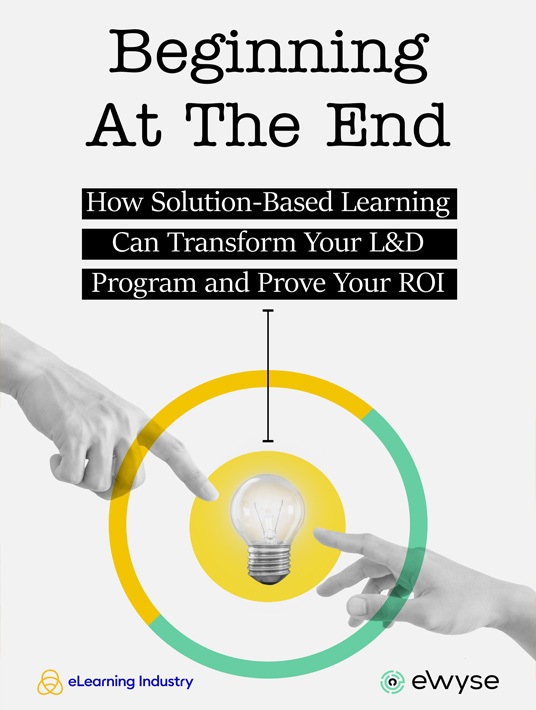Importance Of Broader Needs Analysis In Solution-Based Learning
A needs analysis helps you identify all the requirements or challenges that learners face. However, you can also get valuable insights from it regarding your business operations and L&D areas for improvement, such as which resources are missing to personalize the learning experience and put everything into context. The process can help you design more meaningful activities, set clear learning objectives, and identify any gaps in your existing strategy. However, a broader needs analysis takes this process a step further. It takes the social, cultural, and environmental factors that impact training into account.

Benefits Of Involving An eLearning Consultant In Broader Needs Analysis
An eLearning agency works with you to identify and address the broader needs and challenges of this process. eLearning experts have a deep knowledge of learning psychology and Instructional Design. They know their way around modern technology and they've worked with other organizations to solve similar L&D dilemmas. We have F2F experience and master trainers on board who can help out far beyond eLearning, such as offering blended learning or face-to-face solutions. eLearning consultants can also see beyond the training requirements and consider your corporate culture, current technology stack, and performance stats. This allows them to provide complete solutions that reflect the organizational goals and cater to your team's needs.
Methods Of Broader Needs Analysis
Workshops With Stakeholders
Workshops are a valuable opportunity to collaborate with stakeholders who are able to actively participate in the discussion. Everyone shares their perspectives, making it easier to identify the key problems and pain points that you may have overlooked. Through brainstorming meetings and group activities, a workshop can help you discover potential issues from a firsthand perspective. You get the inside scoop on what's working, what's not, and possible reasons why the problems exist, to begin with. Not to mention, involving stakeholders makes them more emotionally invested in the process, which is essential for getting employee buy-in early on.
Surveys And Interviews
Surveys are usually anonymous, allowing participants to express their thoughts more openly. Interviews, on the other hand, are more personal and revealing. Facial expressions, body gestures, and other nuances enable you to get the complete picture. By combining these methods, you have a better understanding of the needs, challenges, and preferences of the target audience. When creating your survey questions, ensure they're clear and objective. Try to include both open-ended questions, which will provide qualitative data, and closed-ended questions for more quantitative results to get a more holistic overview.
Reports And Business Records
Performance data, financial records, LMS reports, and even customer feedback can shed light on your L&D strengths and areas for improvement. The secret is finding experienced people who can interpret the data, identify patterns and trends, then draw conclusions. For example, employee LMS log-in stats are low, but why aren't they accessing the training platform? Is it a matter of internal eLearning marketing? Do they feel that the content isn't relevant to their job duties or roles?
Navigating Challenges In Broader Needs Analysis
Resistance To Change
It's not uncommon for people to be resistant to change. This can be due to them not trusting the process or fear of losing their jobs. For example, employees may not want to openly share their opinion on the lack of leadership involvement or ineffective training materials because they're afraid of reprisals. This is why it's essential to be fully transparent regarding the purpose of the broader needs analysis and the benefits it will bring. Also, emphasize that stakeholders' contributions are valued and that everything will remain confidential.
Time And Resource Constraints
Limited time and resources can impede your data collection and evaluation process. This is why you should prioritize collecting the most critical information that will give you clues about the needs and preferences of your learners, as well as areas that will have the greatest impact on your L&D ROI. An eLearning agency has the tools and know-how to gather, organize, and assess Big Data to pinpoint the problem and possible solutions based on the entire analytical landscape, not just learner engagement reports or completion rates.
Engaging Stakeholders In The Process
Stakeholders may have a conflict of interest when it comes to the process. They may not even be as committed, which will make it much harder to engage them in broader needs analysis. So, identify the key stakeholders and map out your plan of action so they understand why you're putting your business data under the microscope and how this fits into the grand scheme of things in terms of business growth and employee development. Another solution-based learning perk that you can pitch is the fact that it allows you to save time and money in the future, as you’re doing things right the first time around.
Conclusion
This evaluation process will allow you to get a better sense of business objectives, industry trends, and market dynamics. Then, you can adjust your goals based on those factors and devise the right training solutions. You can even learn more about employees' job roles, experience levels, preferences, learning requirements, etc., through broader needs analysis. We would also be remiss to leave out the cost and time-saving benefits. Needs analysis isn’t a luxury or add-on, but a critical step that helps you focus on solutions that will make a difference instead of wasting resources on initiatives that simply won’t work. Last but not least, solution-based learning also allows you to develop more effective learning interventions. You have the opportunity to identify which skills or core competencies are needed in the workplace and then allocate resources to the right areas.
Download the eBook Beginning At The End: How Solution-Based Learning Can Transform Your L&D Program And Prove Your ROI today to discover how you can leverage the solution-based approach to achieve your objectives and make your eLearning development process more problem-centered. You can also listen to the eLearning Unscripted podcast today to delve deeper into the solution-based strategy and all the benefits it has to offer.

